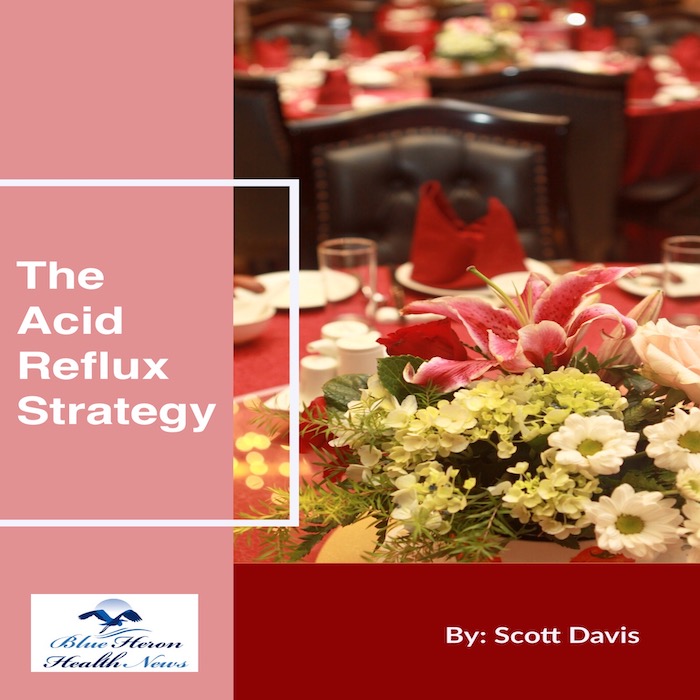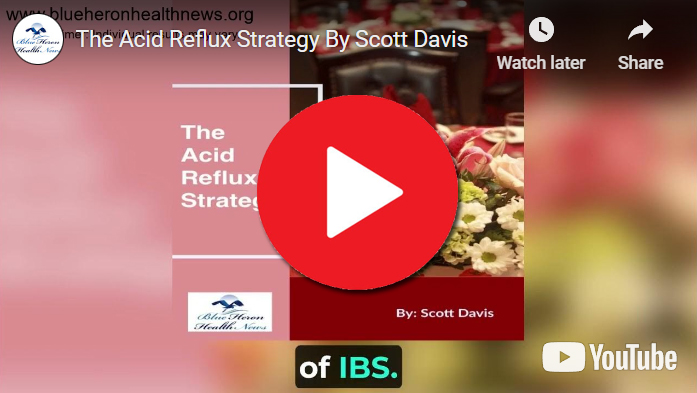
Acid Reflux Strategy™ By Scott Davis According to this eBook, you can start removing the symptoms of acid reflux and other similar problems just by making some changes in your diet, levels of stress, and lifestyle. It will guide you on how to change from the combination of food items to the sleep positions to relieve your problems. It also includes a list of food items you should focus on while shopping for it to find a natural treatment for your symptoms.
What is acid reflux?
Introduction
Acid reflux, also known as gastroesophageal reflux (GER), occurs when stomach acid or bile flows back into the esophagus, the tube that connects the throat to the stomach. This backward flow, known as reflux, can cause a range of symptoms and complications. When acid reflux becomes frequent and severe, it may develop into gastroesophageal reflux disease (GERD), a chronic condition that requires medical attention. This comprehensive analysis will explore the causes, symptoms, diagnosis, treatment, and prevention of acid reflux and GERD. By understanding these aspects, individuals can manage their condition effectively and improve their quality of life.
Anatomy and Physiology of Acid Reflux
The Esophagus and Stomach
The esophagus is a muscular tube that connects the throat (pharynx) to the stomach. The lower esophageal sphincter (LES), a ring-like muscle at the junction between the esophagus and stomach, plays a crucial role in preventing acid reflux.
- Lower Esophageal Sphincter (LES): The LES acts as a valve that opens to allow food and liquid to pass into the stomach and then closes to prevent the backflow of stomach contents. In individuals with acid reflux, the LES may become weak or relax inappropriately, allowing stomach acid to flow back into the esophagus.
- Stomach Acid: The stomach produces hydrochloric acid to aid in digestion. While this acid is essential for breaking down food, it can be harmful to the esophagus if it refluxes, causing irritation and inflammation.
Mechanism of Acid Reflux
The mechanism of acid reflux involves several factors:
- LES Dysfunction: The primary cause of acid reflux is the dysfunction of the LES. If the LES does not close properly or opens too frequently, stomach acid can reflux into the esophagus.
- Delayed Gastric Emptying: Slow or delayed emptying of the stomach can increase the risk of acid reflux. This can be caused by conditions such as gastroparesis or certain medications.
- Increased Intra-Abdominal Pressure: Conditions that increase pressure within the abdomen, such as obesity, pregnancy, or heavy lifting, can force stomach contents to reflux into the esophagus.
Causes and Risk Factors
Common Causes
- Dietary Factors: Certain foods and beverages can trigger acid reflux by relaxing the LES or increasing stomach acid production. Common dietary triggers include:
- Fatty and fried foods
- Spicy foods
- Citrus fruits and juices
- Tomato-based products
- Chocolate
- Caffeinated beverages (coffee, tea, soda)
- Alcohol
- Lifestyle Factors: Lifestyle choices can also contribute to acid reflux. These include:
- Smoking: Nicotine relaxes the LES and increases stomach acid production.
- Obesity: Excess weight increases intra-abdominal pressure, promoting reflux.
- Eating Large Meals: Consuming large meals can increase stomach pressure and cause reflux.
- Lying Down After Eating: Reclining or lying down shortly after eating can allow stomach acid to flow back into the esophagus.
- Medical Conditions: Several medical conditions can increase the risk of acid reflux, including:
- Hiatal Hernia: A condition where the upper part of the stomach pushes through the diaphragm into the chest cavity, weakening the LES.
- Pregnancy: Hormonal changes and increased abdominal pressure during pregnancy can cause reflux.
- Gastroparesis: A condition that delays stomach emptying, increasing the risk of reflux.
Risk Factors
- Age: The risk of acid reflux increases with age, as the LES may weaken over time.
- Genetics: A family history of acid reflux or GERD can increase the likelihood of developing the condition.
- Medications: Certain medications can relax the LES or irritate the esophagus, increasing the risk of acid reflux. These include:
- NSAIDs (e.g., ibuprofen, aspirin)
- Calcium channel blockers
- Antidepressants
- Sedatives
Symptoms of Acid Reflux
Common Symptoms
- Heartburn: A burning sensation in the chest, often after eating, which may be worse at night.
- Regurgitation: A sour or bitter-tasting acid backing up into the throat or mouth.
- Dysphagia: Difficulty swallowing, often due to the narrowing of the esophagus from chronic inflammation.
Other Symptoms
- Chest Pain: Sometimes mistaken for heart-related pain, chest pain from acid reflux can be severe and may radiate to the back, neck, or arms.
- Chronic Cough: A persistent cough that may be caused by acid irritating the throat and lungs.
- Hoarseness or Sore Throat: Irritation from acid can cause a chronic sore throat or hoarseness.
- Nausea and Vomiting: In some cases, acid reflux can cause nausea and vomiting, especially after meals.
- Bloating and Burping: Excessive burping and a feeling of fullness or bloating can occur with acid reflux.
Diagnosis of Acid Reflux and GERD
Medical History and Physical Examination
A thorough medical history and physical examination are the first steps in diagnosing acid reflux and GERD. The doctor will ask about symptoms, dietary habits, lifestyle factors, and any underlying medical conditions.
Diagnostic Tests
Several tests can help diagnose acid reflux and assess the severity of the condition:
- Upper Endoscopy (Esophagogastroduodenoscopy, EGD): A flexible tube with a camera is inserted through the mouth to examine the esophagus, stomach, and duodenum. This test can identify inflammation, ulcers, and other abnormalities.
- pH Monitoring: A probe is placed in the esophagus to measure the amount of acid reflux over 24 hours. This test helps determine the frequency and severity of acid reflux episodes.
- Esophageal Manometry: This test measures the pressure and muscle contractions in the esophagus, assessing the function of the LES and esophageal muscles.
- Barium Swallow (Upper GI Series): The patient drinks a barium solution, and X-rays are taken to visualize the esophagus and stomach. This test can identify structural abnormalities, such as a hiatal hernia.
Complications of Acid Reflux
Untreated or severe acid reflux can lead to several complications:
- Esophagitis: Inflammation of the esophagus caused by repeated exposure to stomach acid. This can lead to ulcers, bleeding, and scarring.
- Strictures: Narrowing of the esophagus due to chronic inflammation and scarring, leading to difficulty swallowing.
- Barrett’s Esophagus: A condition where the lining of the esophagus changes to resemble the lining of the intestine. This is a precancerous condition that increases the risk of esophageal cancer.
- Esophageal Cancer: Chronic acid reflux and Barrett’s esophagus increase the risk of developing esophageal adenocarcinoma, a type of cancer.
- Respiratory Problems: Acid reflux can lead to respiratory issues, such as chronic cough, asthma, and aspiration pneumonia, due to the inhalation of acid into the lungs.
Treatment of Acid Reflux and GERD
Lifestyle Modifications
Making lifestyle changes is often the first step in managing acid reflux and GERD:
- Dietary Changes: Avoiding trigger foods and beverages, eating smaller meals, and not lying down after eating can help reduce reflux symptoms.
- Weight Management: Losing excess weight can reduce pressure on the abdomen and LES, decreasing reflux.
- Elevating the Head of the Bed: Raising the head of the bed by 6-8 inches can prevent acid from flowing back into the esophagus during sleep.
- Avoiding Smoking and Alcohol: Both smoking and alcohol can weaken the LES and increase stomach acid production.
Medications
Several medications can help manage acid reflux and GERD by reducing stomach acid and improving LES function:
- Antacids: Over-the-counter antacids, such as Tums, Rolaids, and Maalox, neutralize stomach acid and provide quick relief for mild symptoms.
- H2 Receptor Blockers: Medications such as ranitidine (Zantac), famotidine (Pepcid), and cimetidine (Tagamet) reduce the production of stomach acid.
- Proton Pump Inhibitors (PPIs): PPIs, such as omeprazole (Prilosec), esomeprazole (Nexium), and lansoprazole (Prevacid), are more potent acid reducers that provide long-lasting relief and promote healing of the esophagus.
- Prokinetics: Medications such as metoclopramide (Reglan) and domperidone (Motilium) help strengthen the LES and speed up stomach emptying.
Surgical and Endoscopic Treatments
For individuals with severe or refractory acid reflux, surgical or endoscopic interventions may be necessary:
- Nissen Fundoplication: A surgical procedure where the top of the stomach is wrapped around the LES to strengthen it and prevent reflux.
- LINX Device: A ring of magnetic beads is placed around the LES to reinforce it and prevent reflux.
- Endoscopic Procedures: Minimally invasive endoscopic techniques, such as Stretta therapy, use radiofrequency energy to tighten the LES.
Prevention of Acid Reflux
Preventing acid reflux involves making lifestyle and dietary changes to reduce the risk of reflux episodes:
- Healthy Eating Habits: Eating a balanced diet, avoiding trigger foods, and eating smaller, more frequent meals can help prevent reflux.
- Weight Management: Maintaining a healthy weight through diet and exercise can reduce the risk of acid reflux.
- Avoiding Smoking and Alcohol: Refraining from smoking and limiting alcohol consumption can prevent LES relaxation and reduce reflux.
- Posture and Positioning: Avoiding lying down after eating and elevating the head of the bed can help prevent reflux during sleep.
Conclusion
Acid reflux is a common condition that can significantly impact an individual’s quality of life. By understanding the causes, symptoms, diagnosis, treatment, and prevention of acid reflux and GERD, individuals can effectively manage their condition and reduce the risk of complications. Lifestyle modifications, dietary changes, medications, and, in severe cases, surgical interventions can help alleviate symptoms and improve overall health. Public awareness and education are essential for empowering individuals to take control of their condition and achieve better health outcomes.
Acid Reflux Strategy™ By Scott Davis According to this eBook, you can start removing the symptoms of acid reflux and other similar problems just by making some changes in your diet, levels of stress, and lifestyle. It will guide you on how to change from the combination of food items to the sleep positions to relieve your problems. It also includes a list of food items you should focus on while shopping for it to find a natural treatment for your symptoms.
